‘Dreamers only need time and friends’: Judy Nylon on David ‘Piggy’ Worth and life in early 70s World’s End
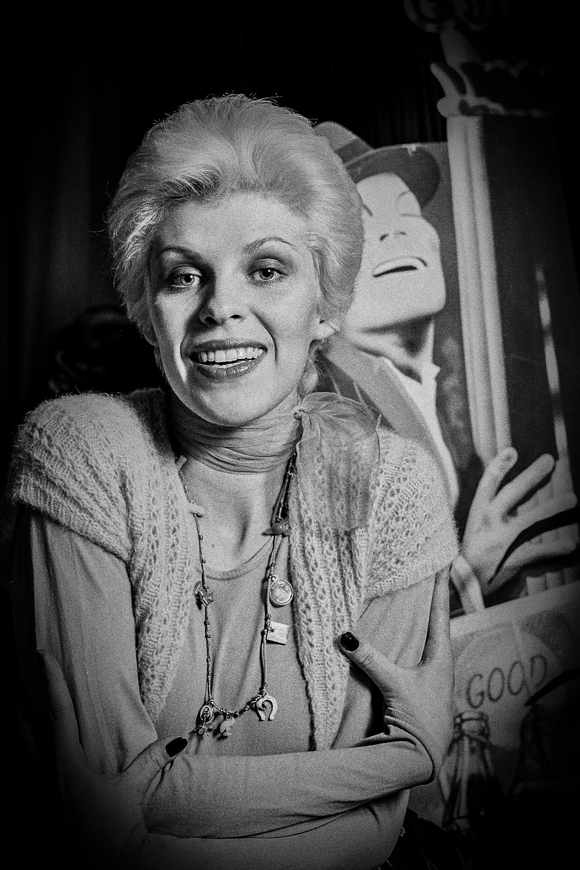
//Judy Nylon at David “Piggy” Worth’s basement flat, Edith Grove, World’s End, London, 1971. Photo:©Tony Hall. No reproduction without permission//
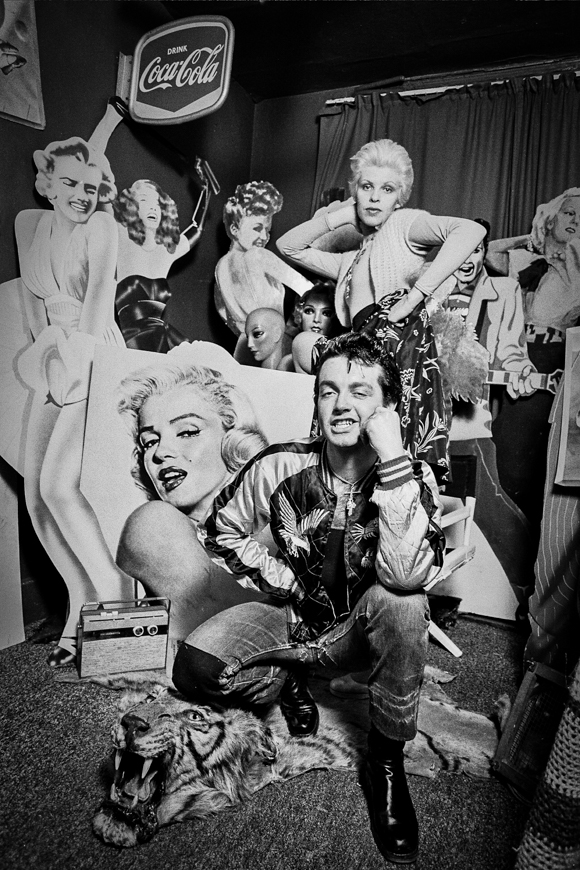
//Nylon and Worth amid the cut-outs, props and mannequins in his flat, 1971. Photo: © Tony Hall. No reproduction without permission//
It is a great honour to feature this guest post by the artist and thinker Judy Nylon about her friend David “Piggy” Worth and their life and milieu in London at the turn of the 70s (brought up in Boston, Nylon had arrived in the UK capital at the start of the decade). The photographs, like those posted here at the weekend, were taken by Tony Hall as he set out on his career in photography, and have not been previously published…
THERE was a time when I smoked and owned skirts.
I lived at 14 Edith Grove, just south of Fulham Road, in a house owned by Donald and David Cammell just after they’d done Performance.
Piggy lived further down Edith Grove below the King’s Road, in a basement flat that was like stepping into his imagination. He had collections of clothes, props and small objects.
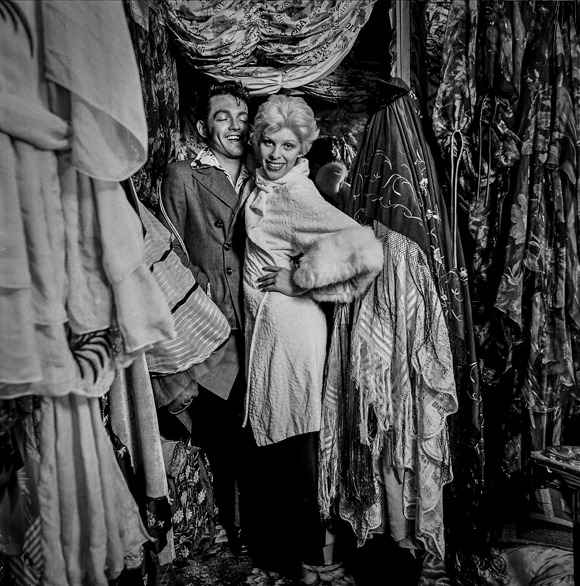
//”Like stepping into his imagination.” Nylon and Worth and part of his clothing/antiques collection. Photo: © Tony Hall. No reproduction without permission//
The flat was always a bit damp but we stayed there for hours with cups of milky tea and biscuits; he’d show me objects and tell me what sort of characters would own such things.
It was an urban anthropology of London lovingly revealed for a recent immigrant; a show-and-tell date. He’d hunted charity shops and markets for years, finding the best treasures from 20th Century England.
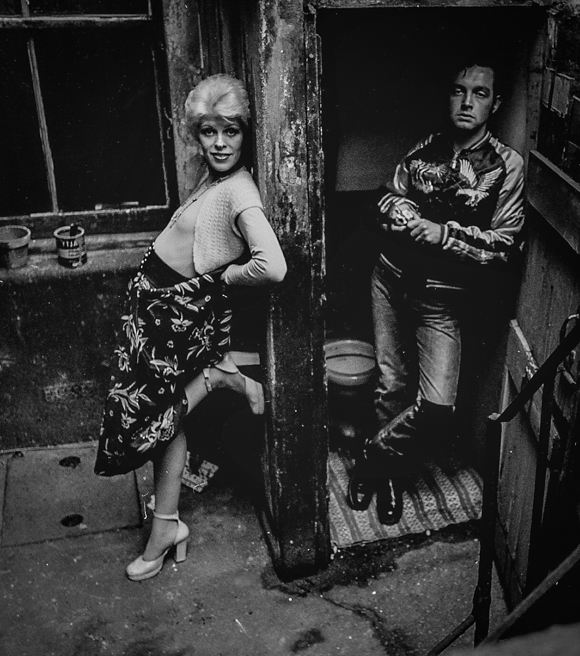
//By the outside privy at the back of Worth’s Edith Grove flat. Photo: © Tony Hall. No reproduction without permission//
It was interesting that we ‘lived in the moment’, never sharing personal details; it was the way kids play. We were both represented by model agencies, ‘sort of’. For dreamers, photography is storytelling. I was not so much a model as a player in this unnamed form of filmic still photography. This was the scaffolding in our creative lives. There was no money changing hands; we did not have to negotiate with any ‘industry’ (where you lose so much energy in your youth by begging a chance).
In the pictures shot by Tony, Piggy owned most of what I am wearing. I’d showed up in my leotard, the fluffy bolero and my floor length black cocktail skirt that I usually wore with a too-small leather bike jacket. All I owned fit into a small suitcase. I’d come to London with a few pieces that Clovis Ruffin and Stephen Burrows gave me.
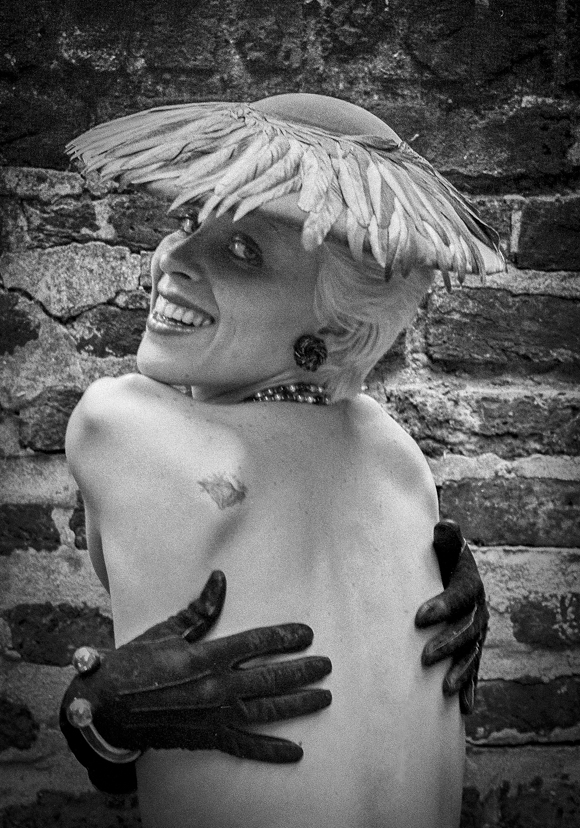
//Photo: © Tony Hall. No reproduction without permission//
These photographs by Tony Hall are perfection. Narrative collaboration all around… there’s no plot but lots of detailed sets and character development. Role-playing in immersive worlds: LARPs remind me of this now. I first realized, doing this, that what you were thinking was photographable.
Piggy studied people and had a lexicon of finely nuanced gestures…. almost like tics, he’d rehearsed for his characters. These were completely different for each of the time periods and characters he inhabited.
He liked American 1950s design sensibility and a sort of Deco filtered through Biba, Ziggy, Lurex, Perspex, Pop Art and a Brechtian sensibility born of our extreme poverty and blind youth. Neither of us owned a camera or a phone or a car, or a TV, but we were rich in ‘time’.
Dreamers only need time and friends.
Our stepping into frame was a pure form of ‘playing’. Context is everything. There were still lots of ‘old stock’ shops then. I remember when Moss Bros had a huge warehouse clear-out; everybody had some pieces from them and also Anello & Davide.
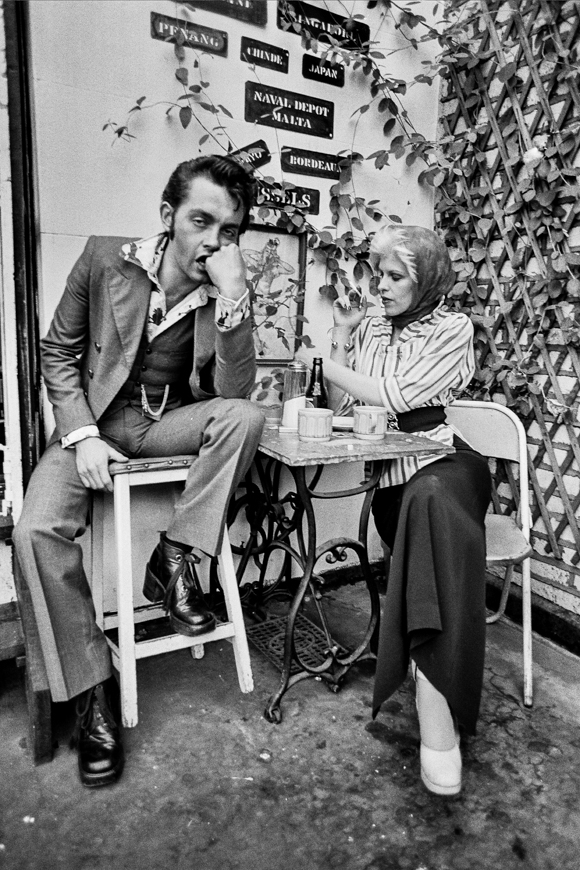
//Worth and Nylon in the patio of a King’s Road cafe. Photo: © Tony Hall. No reproduction without permission//
Michael Joseph, adored forever for the Beggar’s Banquet photo series of the Stones, was shooting realistic wartime bombing stills in the bomb scarred East End, epic in scale, but for only for ads. The Scott brothers, Ridley and Tony, were making Hovis commercials that were totally about the cinematography.
Eventually, I put myself forward as a stylist instead of a model and started working very long hours exclusively for Ian MacDonald. He’d learned to shoot as a kid in the RAF, making aerial photographs. His clients were Silk Cut, Player Specials, Avon, Findus, Dunhill and Habitat. No fashion; everything was big. I’d work with a megaphone, building an indoor beach with several tons of silicon sand and guys I’d hire from the Shoreditch Labour Exchange, or rent Boulle and tortoise-shell desk accessories to make Dunhill ads look luxe enough for the Arab countries.
Then I’d run to Paris to hang out. I was also going back to New York on cheap Freddie Laker flights when I needed a New York Doll break….until I was flat broke again then I’d go back to London with something I could flog to cover the trip.
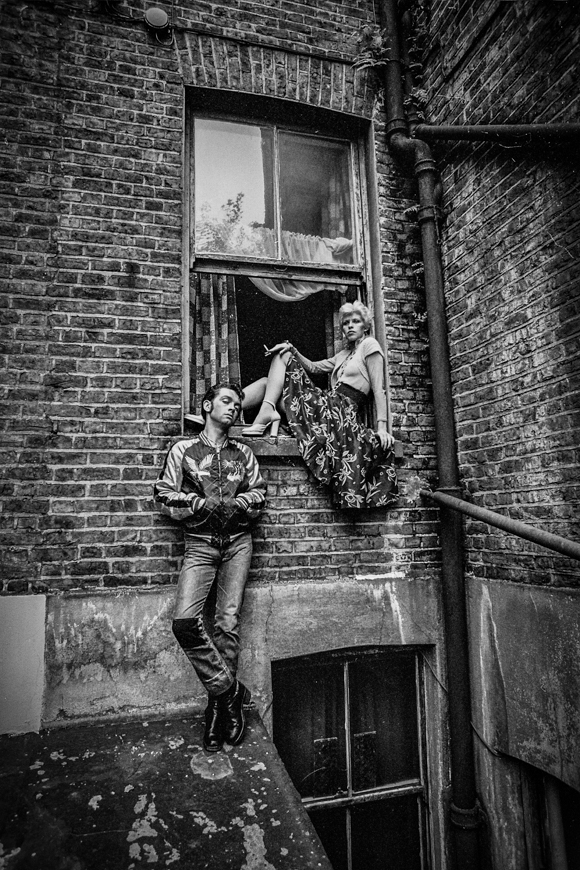
//Photo: © Tony Hall. No reproduction without permission//
JUDY NYLON
OCTOBER 2016
View A Conversation With Judy Nylon, recorded as part of the Superhero Sessions at Paris space Seymour +, here.
